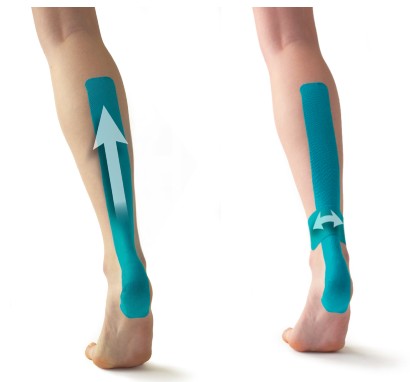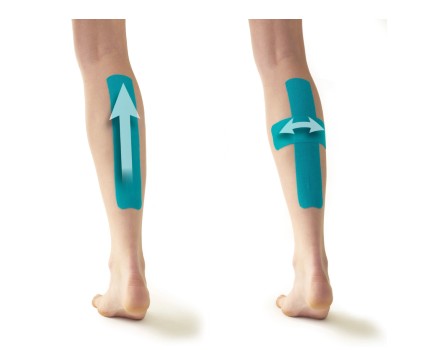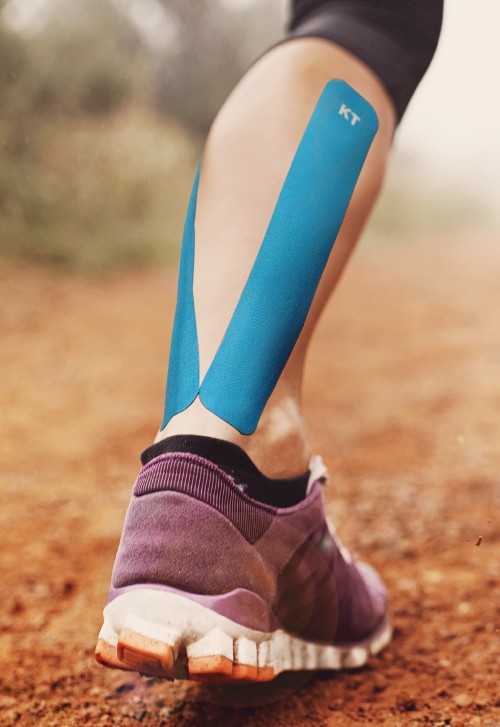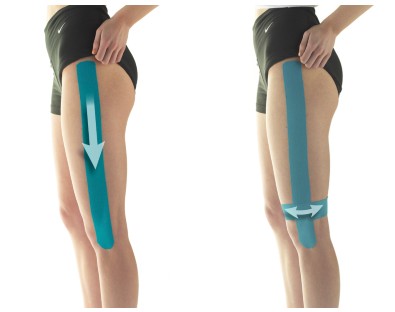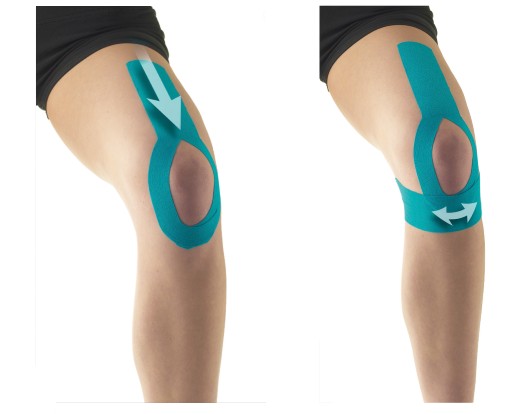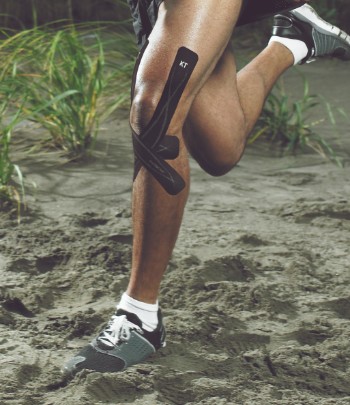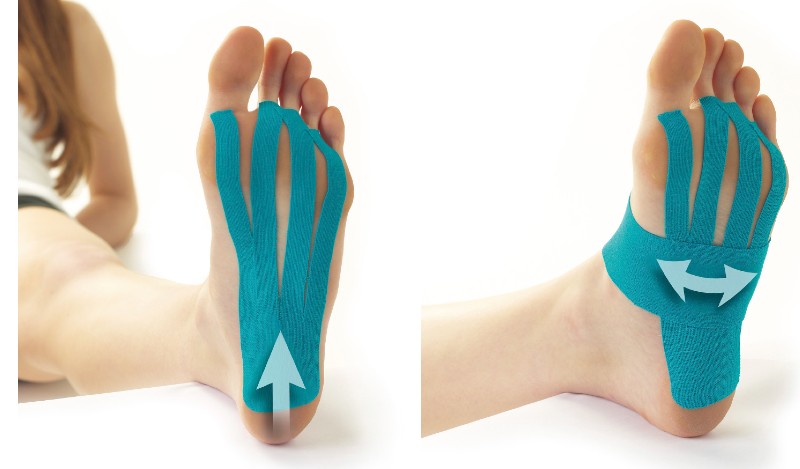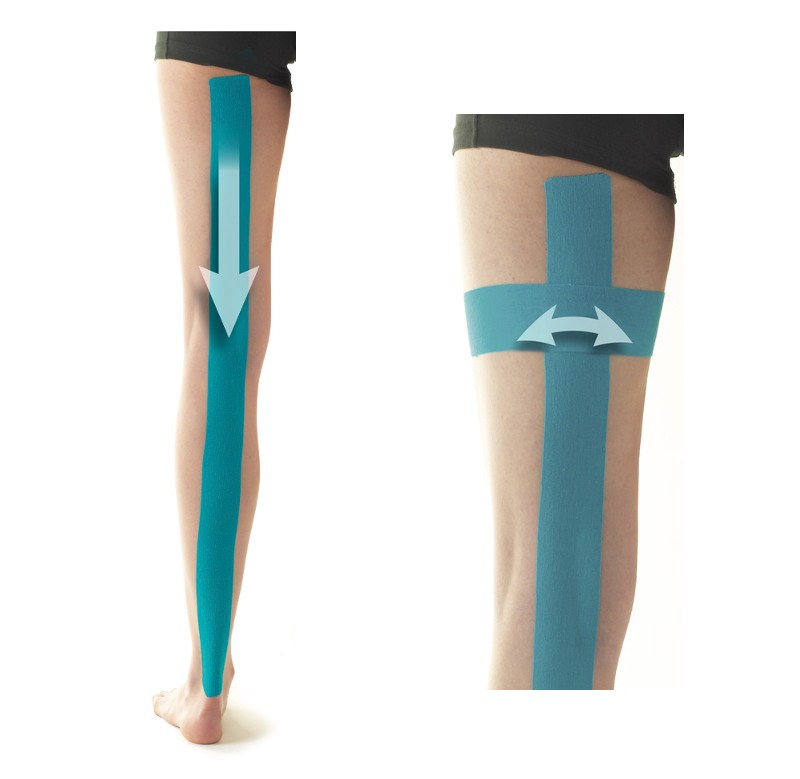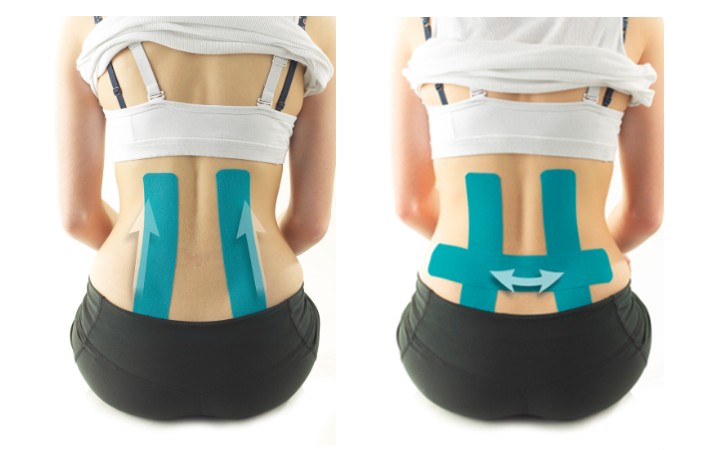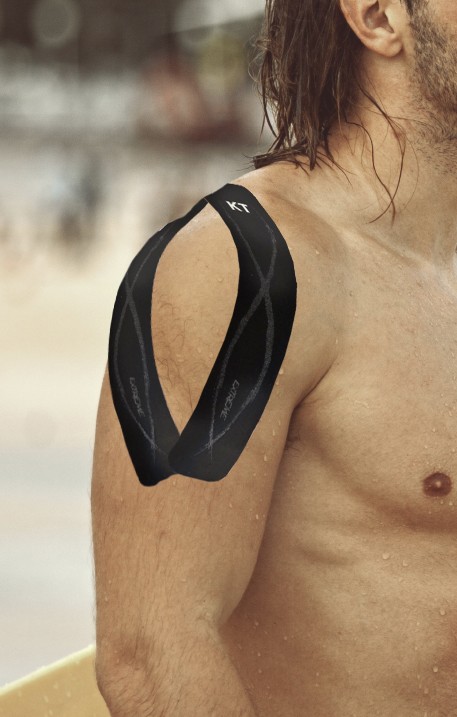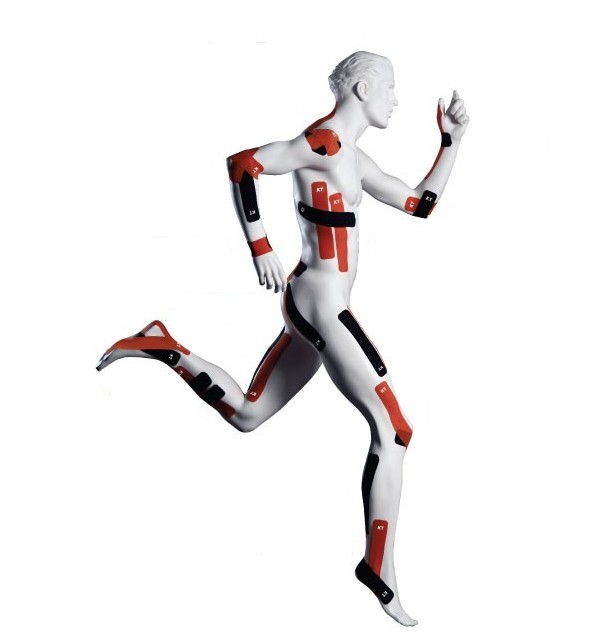Ultimate Guide: How to Apply Kinesiology Tape
Kinesiology tape is a clever elastic sports tape that's quickly become a favourite among top-level athletes and physiotherapists. It can act as a versatile brace, supporting the muscles, tendons and ligaments, while also providing drug-free pain relief for a number of conditions.
However, we know that proper application of kinesiology tape can be a little tricky, especially since everyone's bodies, problem areas and workouts are different. To help with this, we've created an Ultimate Guide: How To Apply Kinesiology Tape. We'll go over how to apply the tape more effectively, and then highlight some examples of taping methods that help support particular areas like the Achilles, IT band, knee, and plantar fasciia.
What Does This Guide Cover?
- Which Kinesiology Tape Should I Choose?
- Step by Step Guide To Applying Kinesiology Tape
- Applying Kinesiology Tape to Particular Parts of the Body:
- Can Kinesiology Tape Be Used on Other Parts of the Body?
Which Kinesiology Tape Should I Choose?
We carry quite a variety of kinesiology tapes here at Health and Care and you can have a look at our whole range here. But, if you're a looking something to get you started with kinesiology tape, here are some of our best sellers, trusted by sportspeople and loved by our customers:
- Our Overall Best Kinesiology Tape: KT Tape Pro 10-Inch Precut Kinesiology Tape
- Our Best Kinesiology Tape for Running: KT Tape Original 10-Inch Precut Kinesiology Tape
- Our Best Kinesiology Tape for Swimming: RockTape H2O Kinesiology Tape 5cm x 5m
- Our Best Wide Kinesiology Tape: RockTape Mini Big Daddy Kinesiology Tape
- Our Best Kinesiology Tape Roll: Ultimate Performance Kinesiology Tape (5m Roll)
Step by Step Guide To Applying Kinesiology Tape
Kinesiology tape works by lifting the skin from the tissue below it, which helps alter pain receptors in the skin, fascia and muscles. In order for this to work, a certain degree of stretch has to be applied to the tape during application on the affected area. We'll go over techniques for applying kinesiology tape so specific body parts, but first here are some general steps to maximise the effectiveness and adhesion of the tape:
- For best results, apply tape an hour before athletic activity.
- Before applying, rub the tape to activate the adhesive so that it sticks to the skin immediately.
- You should also make sure the skin is clean, dry and free from any creams or oils like moisturiser. You can also trim the hair for better adhesion.
- Try not to handle the adhesive side of the tape, as this can reduce its efficacy.
- If applying kinesiology tape to a joint, move it into a fully bent position. If you apply it to an extended joint, you risk pulling off the tape when you bend it.
- Keep the joint bent throughout the application process.
- When applying the tape, the ends of the piece you are using should be applied directly to the skin without stretching, otherwise it could pull up and not stick.
- The middle part of the tape can be stretched over the selected area, but do not overstretch, as this can lead to skin irritation or abrasions.
- Finally, make sure the adhesive is set by firmly going over the tape with your fingers, making sure that all edges are down.
Kinesiology Tape For the Achilles Tendon
The Achilles tendon is vital for key movements such as running jumping and lifting, so it's especially important to keep this vulnerable body part protected. The trick is to support the Achilles tendon by anchoring the tape to the sole of the foot, and stretching it up and over the Achilles to ensure correct alignment.
- Lift the foot up and anchor the tape to the sole of the foot
- Apply the tape vertically with the desired level of stretch up to around the mid calf
- Apply a second strip vertically across the tendon just above the ankle bone
Ultimate Performance Kinesiology Tape Applied to Treat Achilles Tendonitis
Kinesiology Tape for Calf Strain
Responsible for stability, propulsion and speed, the calf muscle is crucially important for all competitive athletes. Don't let calf strain get in the way of your potential. Use either of these expert-approved taping methods to reduce the risk of injury, or to promote fast healing of an already existing one.
Either...
- Apply the tape vertically starting just above the ankle until just below the knee
- Apply the second strip horizontally across the affected area and an anchor point at each end
Ultimate Performance Kinesiology Tape Applied to a Calf Strain
Or Alternatively...
- Apply both strips around the sides of the calf
- This offers cradled support and impact absorption
KT Tape Applied to a Calf Strain
Kinesiology Tape for IT Band Pain
Iliotibial band syndrome is caused by a tightening of the IT band, which results in friction and pain around the knee. Rest assured, our scientific taping method will eliminate any pain caused by this unpleasant, debilitating affliction. Follow these easy instructions for optimal support against IT band pain:
- Apply a long strip of tape with no stretch from the hip bone vertically down to just below the knee
- Apply a second strip horizontally across the outer leg just above the knee with 50% stretch
Ultimate Performance Kinesiology Tape Applied to IT Band Pain
Kinesiology Tape for Knee Pain
Knee pain is common for people from all walks of life, so anyone can benefit from this kinesiology taping method. One of the most common causes of knee pain is improper alignment of the kneecap, so it's important to surround the patella as instructed to ensure maximum support.
Either...
- Flex the knee at a 90° angle
- Split the strip vertically 3-4" at one end
- Apply the tape from the mid-thigh down to the knee
- Position each side of the split around the patella
- Apply a vertical strip below the kneecap with 50% stretch
Ultimate Performance Kinesiology Tape Applied to Treat Knee Pain
Or Alternatively...
- Apply a strip of kinesiology tape horizontally under the patella
- Have two more pieces of kinesiology tape intersect under the patella
- Impact on the patella is now dispersed above and below the knee
KT Kinesiology Tape Applied to Treat Knee Pain
Kinesiology Tape for Plantar Fasciitis
At Health and Care, we're often asked "what's the best way to reduce plantar fasciitis pain?" Well, here's our answer. Applying kinesiology tape using this method allows complete mobility while keeping the key tendons and ligaments supported for maximum pain relief. Please note that it is optional to split the strips as shown in the diagram below.
- Lift the foot and anchor the tape to the heel, apply along the base of the foot with no stretch
- Apply a second strip anchored at the top of the foot, wrapped from medial to the lateral side for added arch support
Ultimate Performance Kinesiology Tape Applied to the Treat Plantar Fasciitis
Kinesiology Tape for Sciatica
If you experience shooting or burning pains that run down your entire leg, you may well be suffering from sciatica. This debilitating condition affects the way you walk and can even get in the way of sleep. Luckily for you, we've got the remedy - just follow these two simple steps:
- Anchor just below the buttock and apply vertically down to the ankle with 50% stretch
- Apply a second strip horizontally across the widest part of the hamstring with 50% stretch
Ultimate Performance Kinesiology Tape Applied to Treat Sciatica
Kinesiology Tape for Lower Back Pain
We've all experienced back pain at some point in our lives, so we all know how hard it makes getting out of bed. Thankfully, we know the best taping technique to help get you back on your feet. The key is to start with light, vertical compression that provides support along the spine, and then directly target the most painful area with a high-stretch band.
- Bend forwards from the waist
- Apply two vertical strips on either side of the buttock and apply vertically until half way up the spine (25% stretch)
- Apply a third strip horizontally across the most painful area with 50% stretch
Ultimate Performance Kinesiology Tape Applied to the Back
Kinesiology Tape for Shoulder Pain
The shoulder joints have a large range of motion which puts it at risk of injury during a lot of sports, or from overuse. The muscles are also extremely active during swimming, running and weightlifting. Kinesiology tape can brace around the shoulder to soften the impact of dramatic arm movement without compromising performance.
- Apply two strips of kinesiology tape around the shoulder joint
- As the muscles flex, they're braced to ease impact
- Range of motion is unaffected if enough stretch is used when applying
KT Kinesiology Tape Applied to Treat Shoulder Pain
Can Kinesiology Tape Be Used on Other Parts of the Body?
The demonstrations above are just a few examples of where you might apply kinesiology tape, but it can be used nearly anywhere you might need some extra support. Below is an image from KT Tape showing some body parts it can be applied to, along with some conditions and pains it can help with:
✔ Quad strain
✔ Hamstring pain
✔ Runner's knee
✔ Rib pain
✔ Golfer's elbow
✔ Wrist pain
✔ Muscle tightness
✔ Inflammation
✔ Achilles tendonitis
✔ Back pain
✔ Knee pain
✔ Shoulder pain
✔ Foot pain
✔ Plantar fasciitis
✔ Shin splints
✔ Tennis elbow
✔ Carpal tunnel
✔ Neck Strain
✔ Gluteus pain
✔ Calf strain
✔ Ankle sprain
Time to Get Taping
We hope this guide has helped you learn the best techniques for applying kinesiology tape effectively, so you can get out there and push your limits and be the best athlete you can be. If you're still not sure on what kinesiology tape is best for you, why not have a look at our full range of Kinesiology Tape.
Want to know more about kinesiology tape, or have something to add? Let us know in the comments below or get in touch via Facebook and Twitter.
Tags: Sports Equipment, Physiotherapy, Rehabilitation, Pressure Relief, Foot and Ankle Pain, Back Pain

